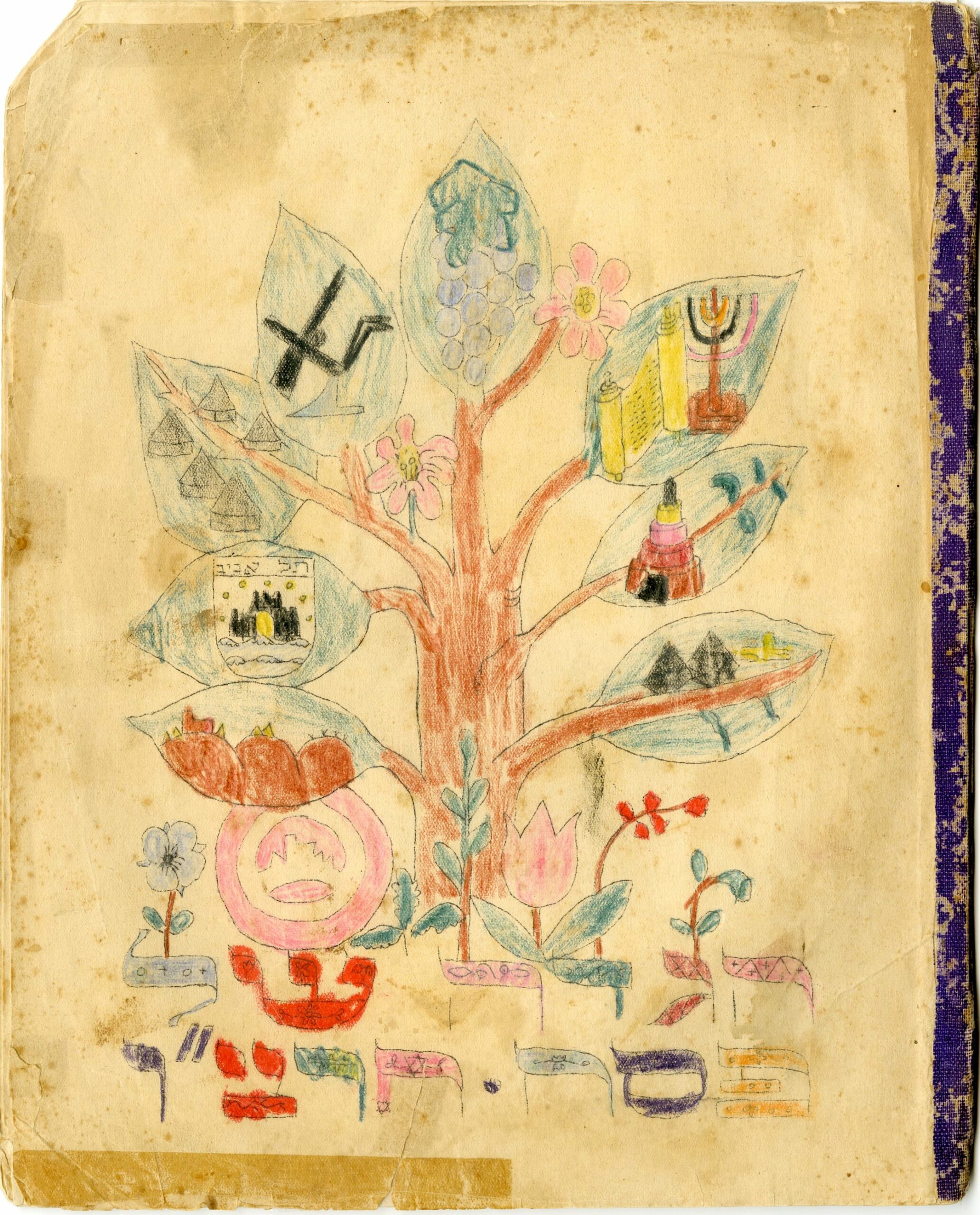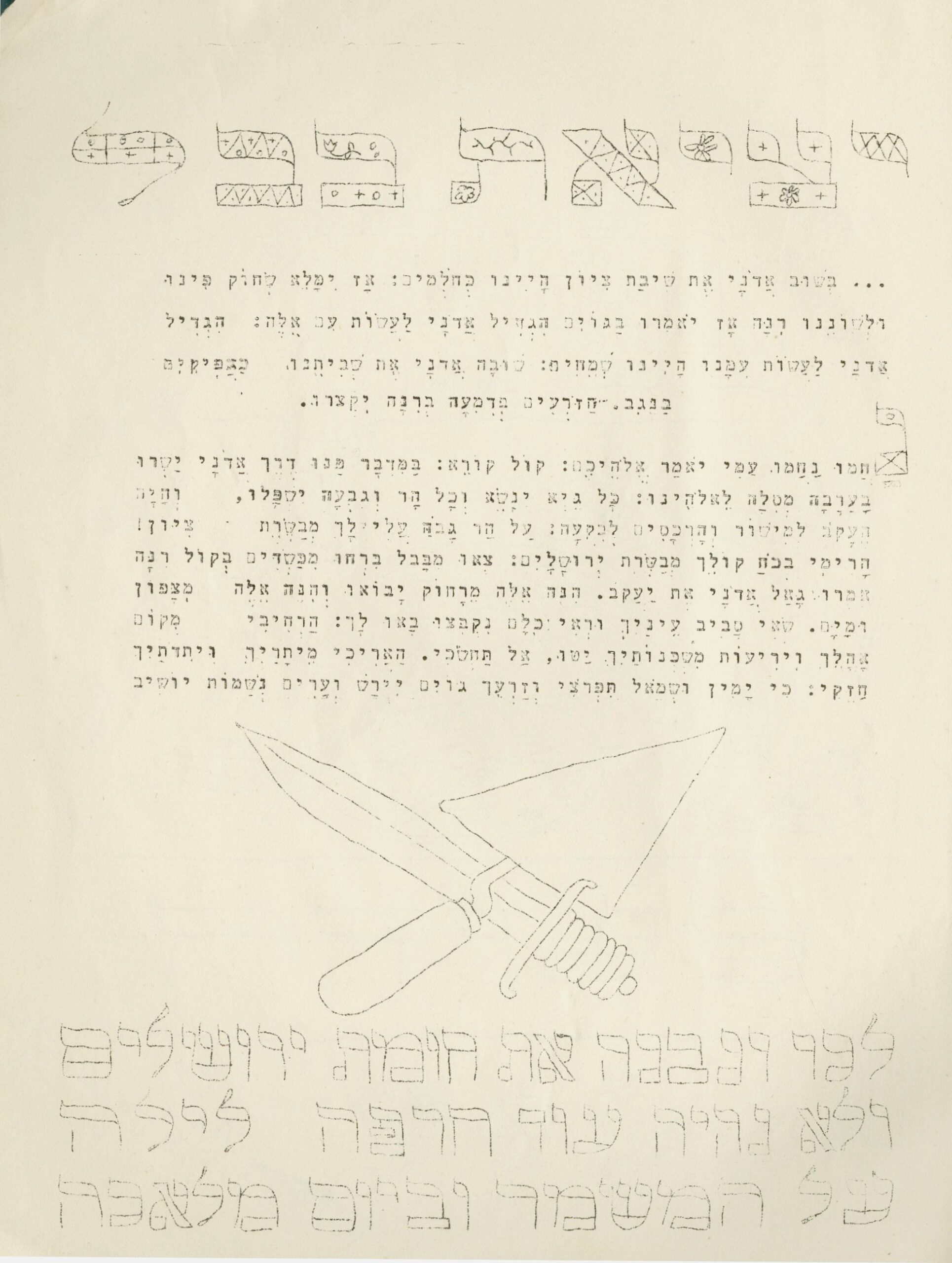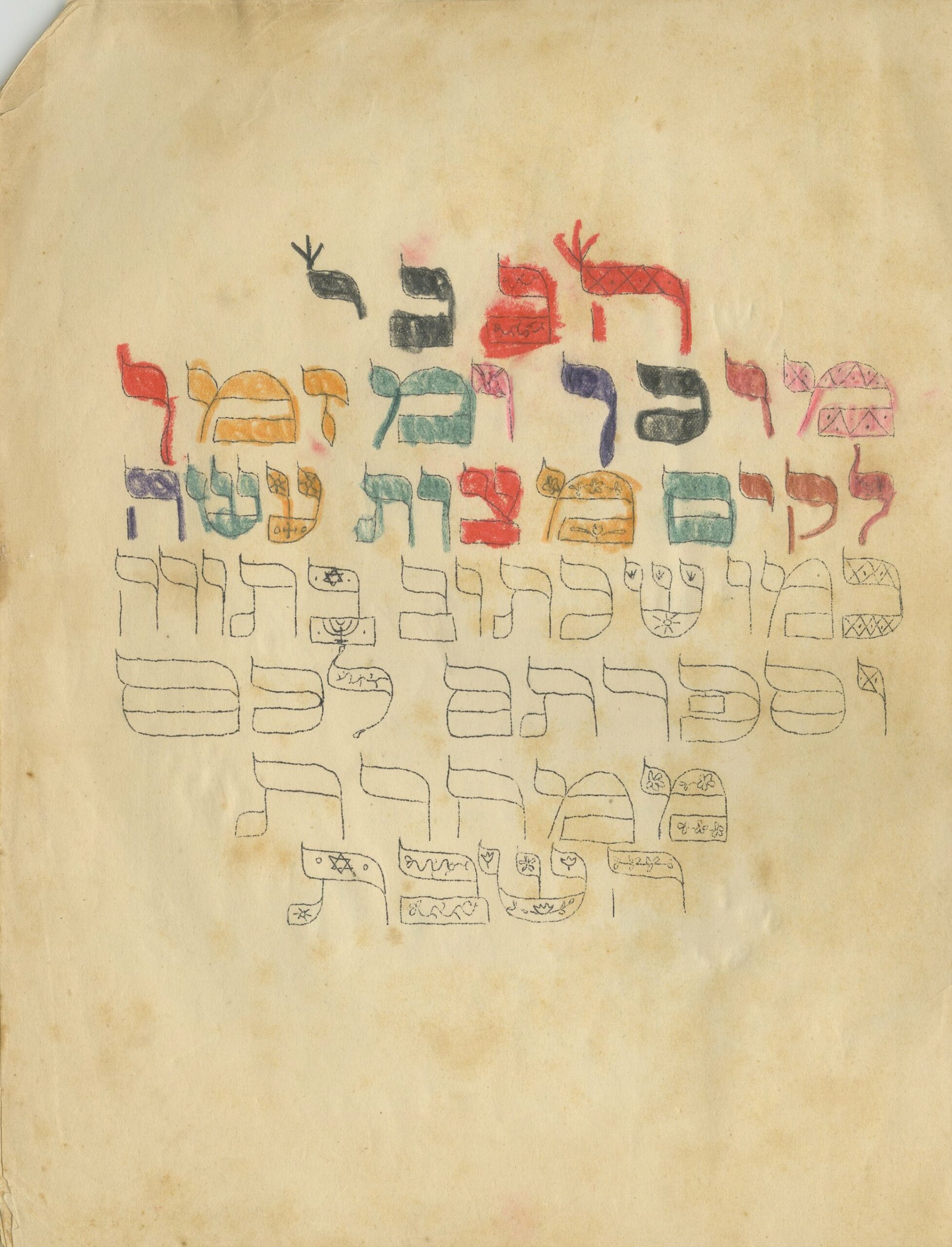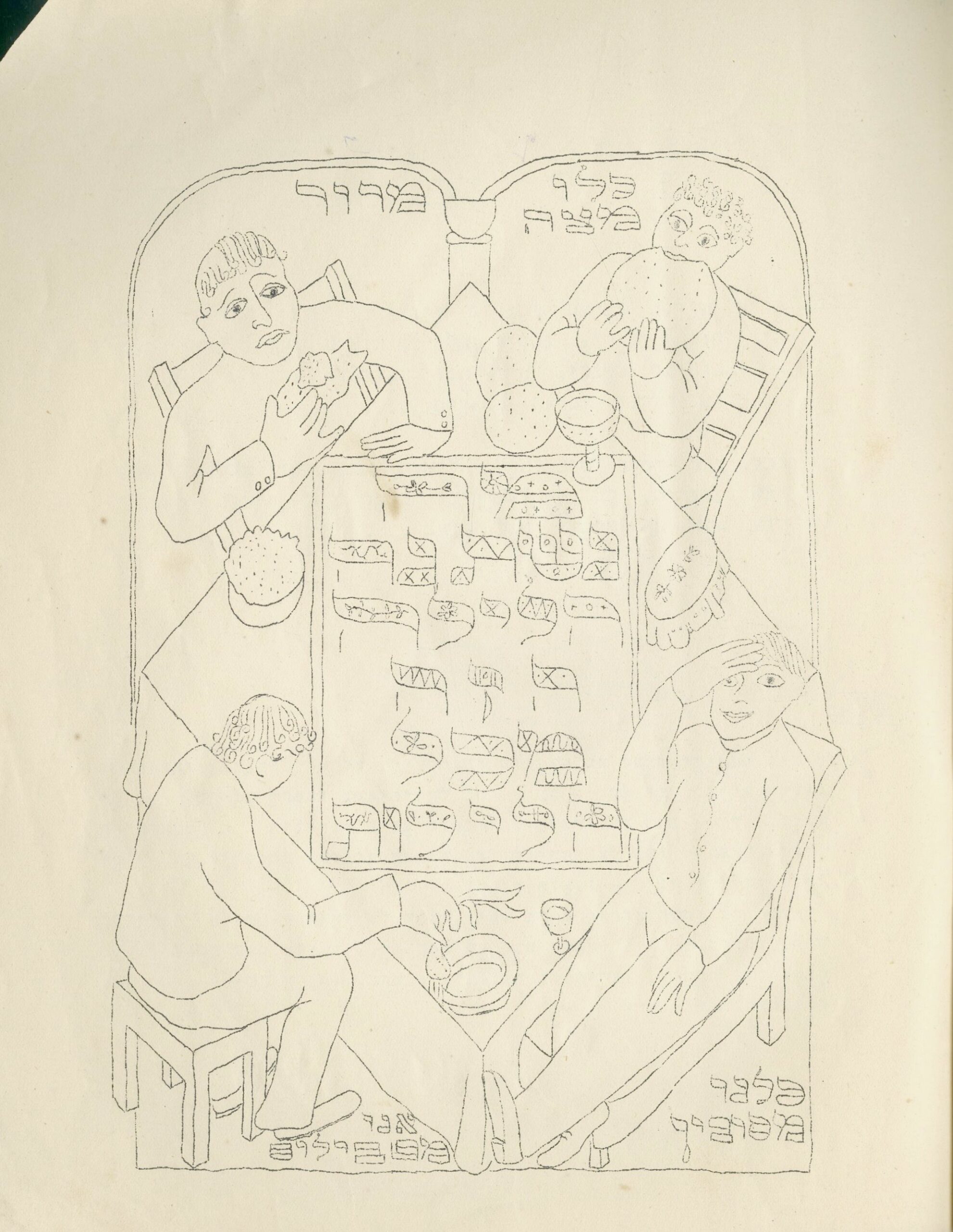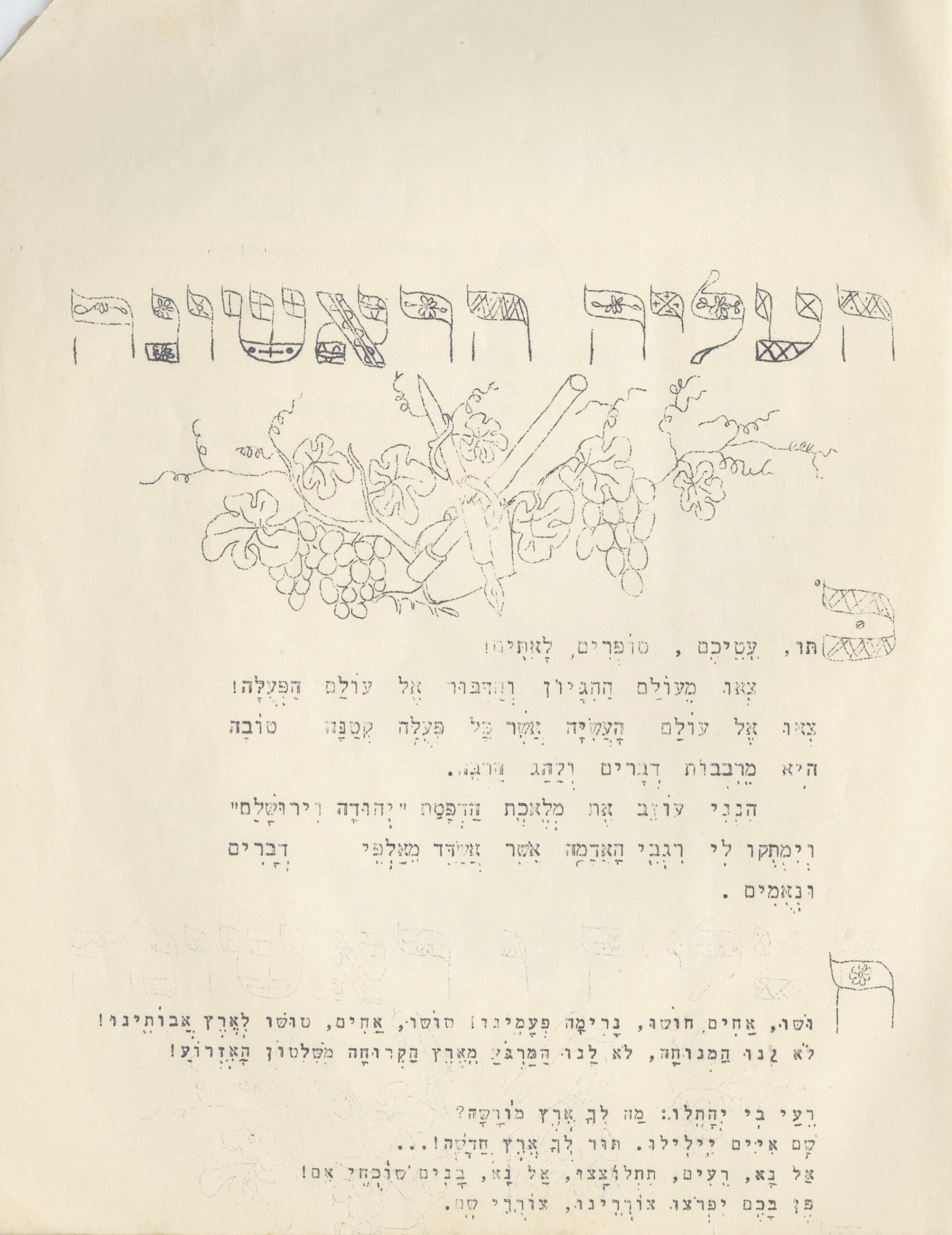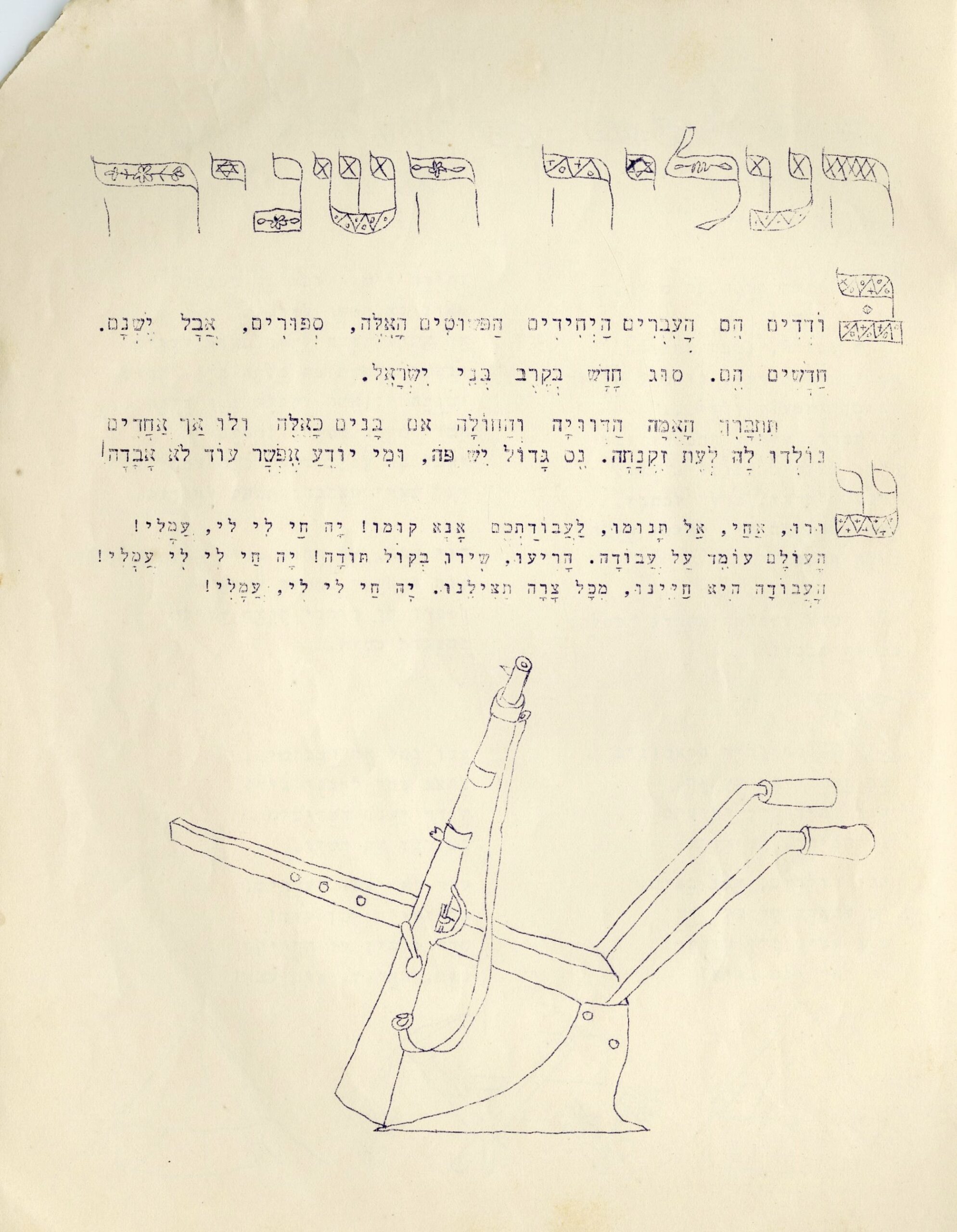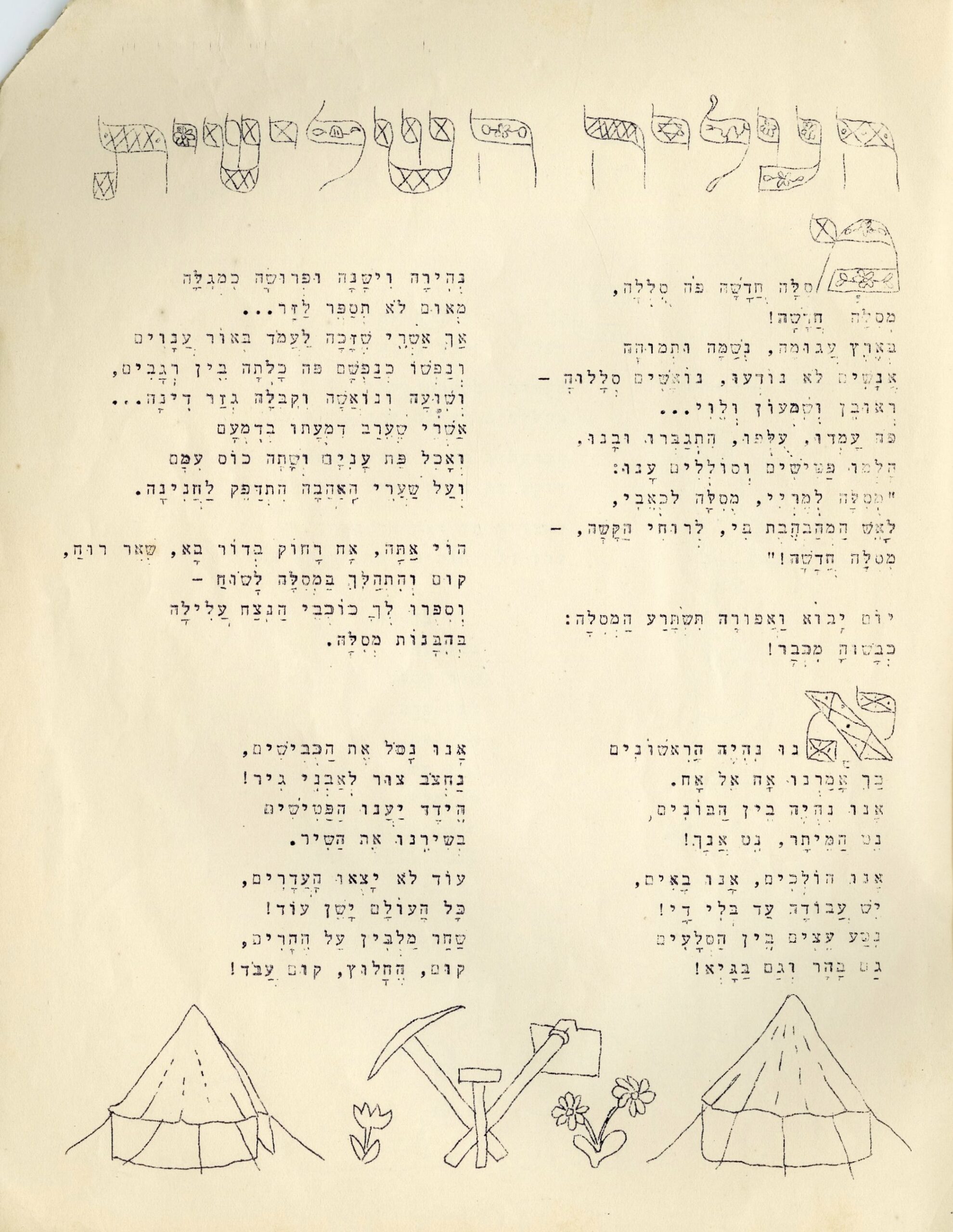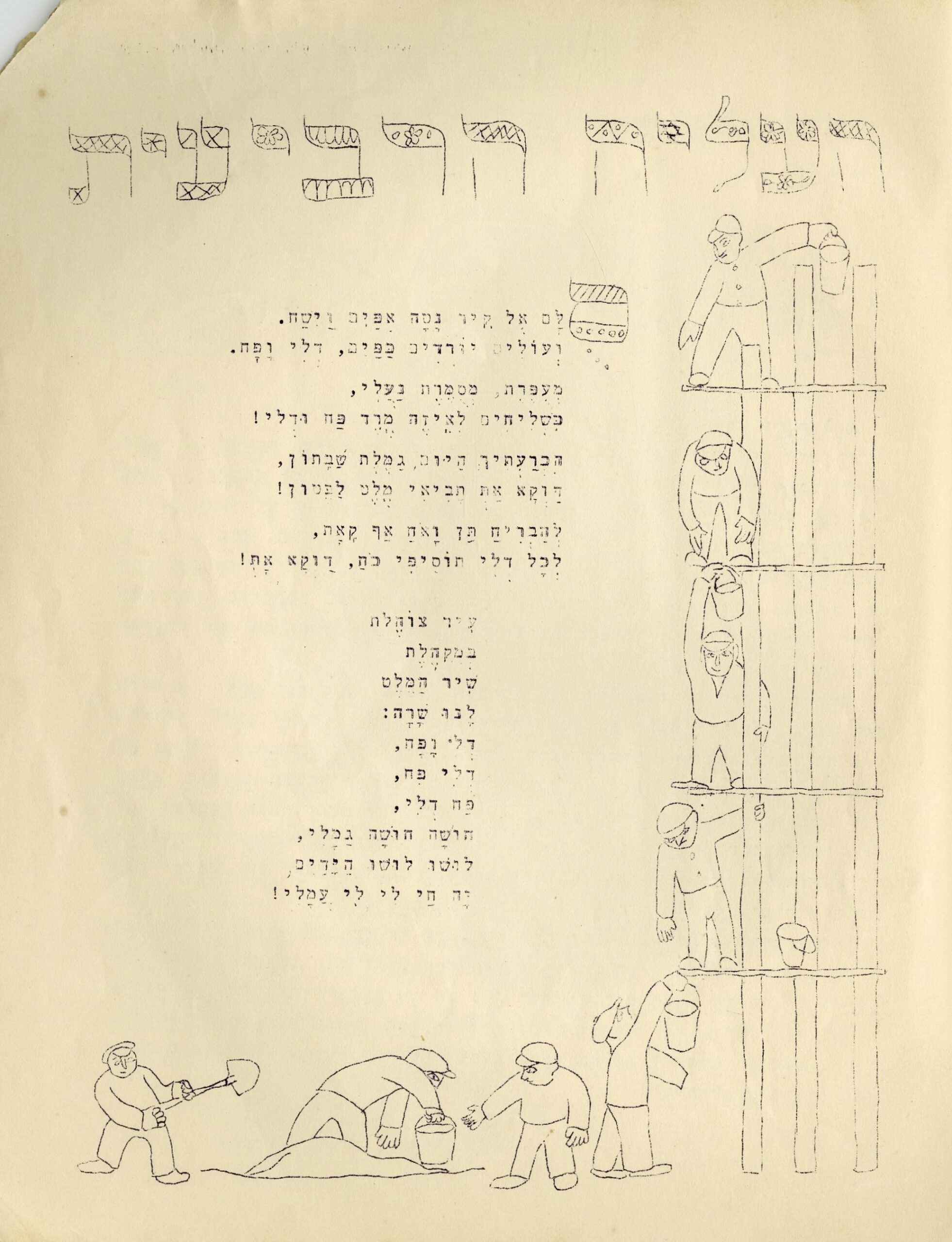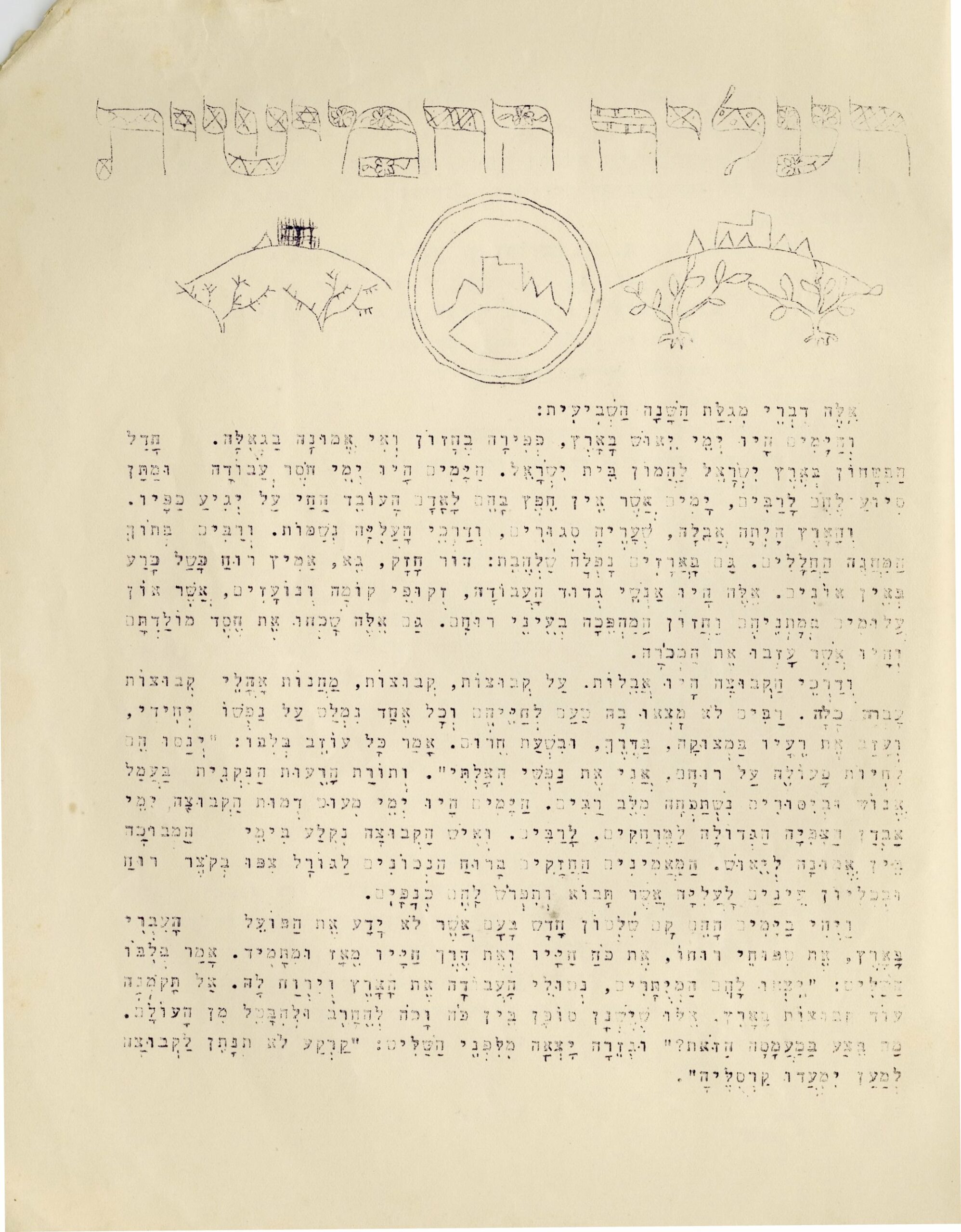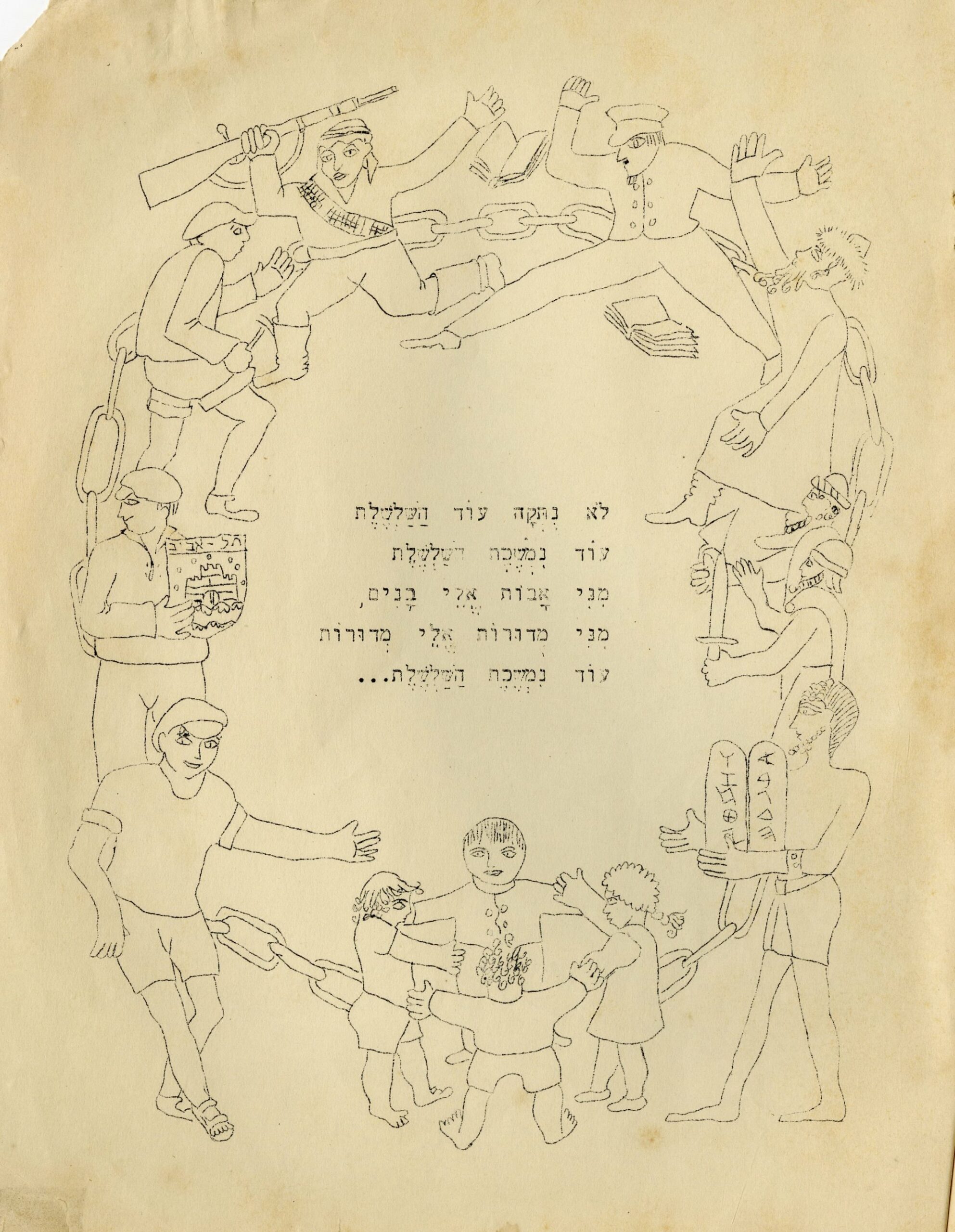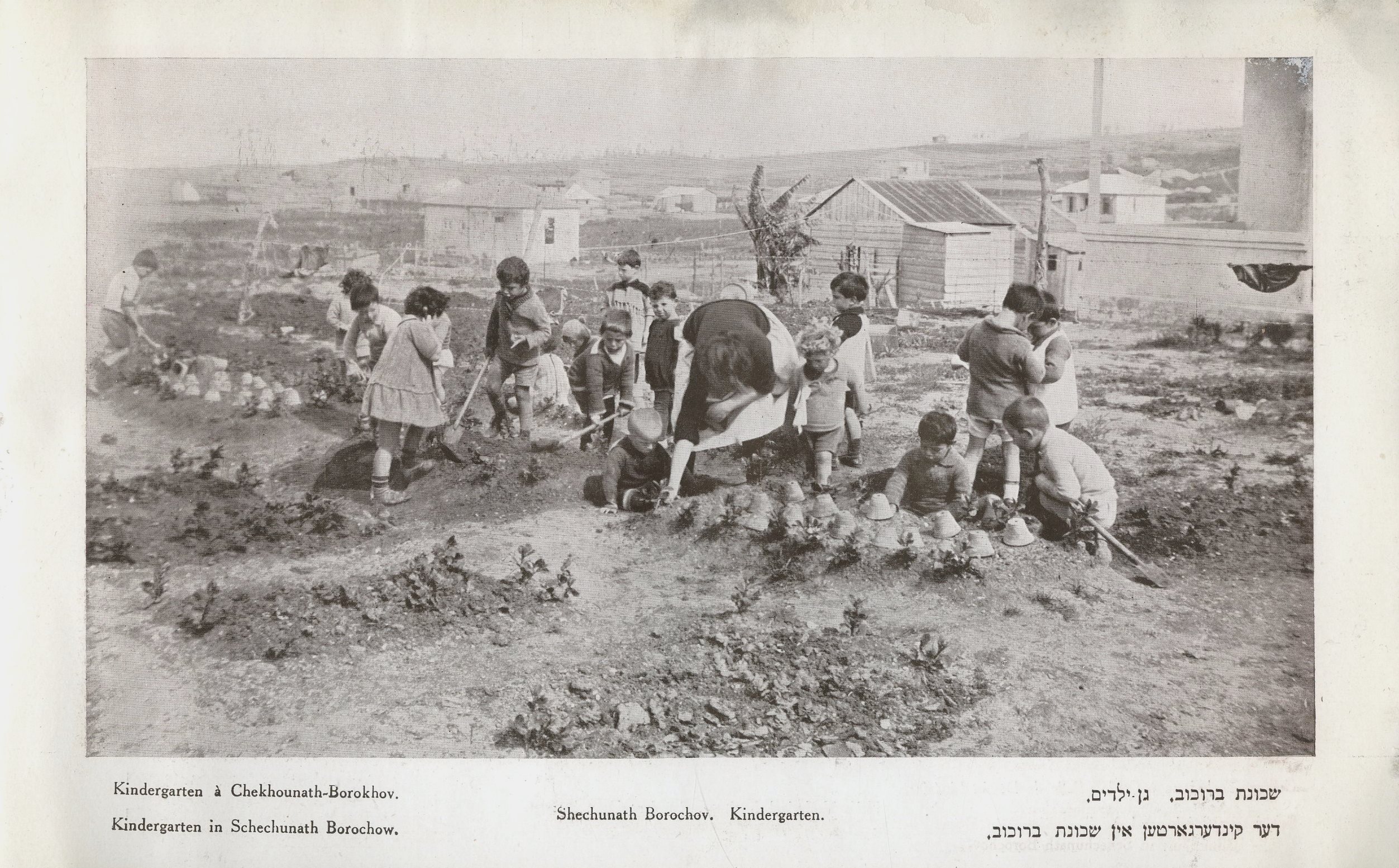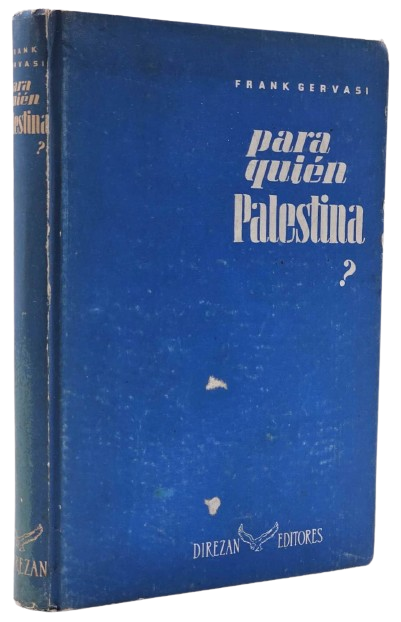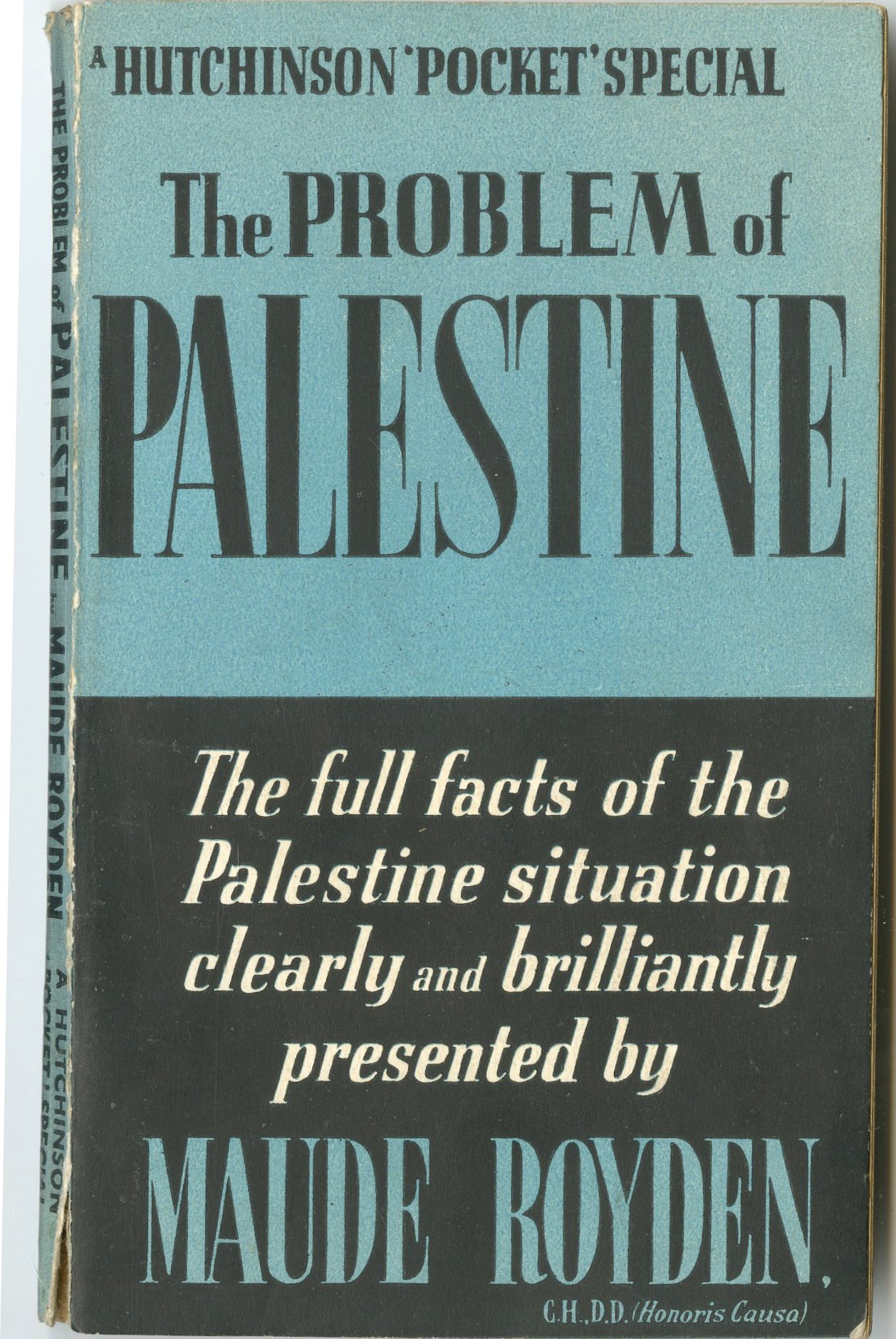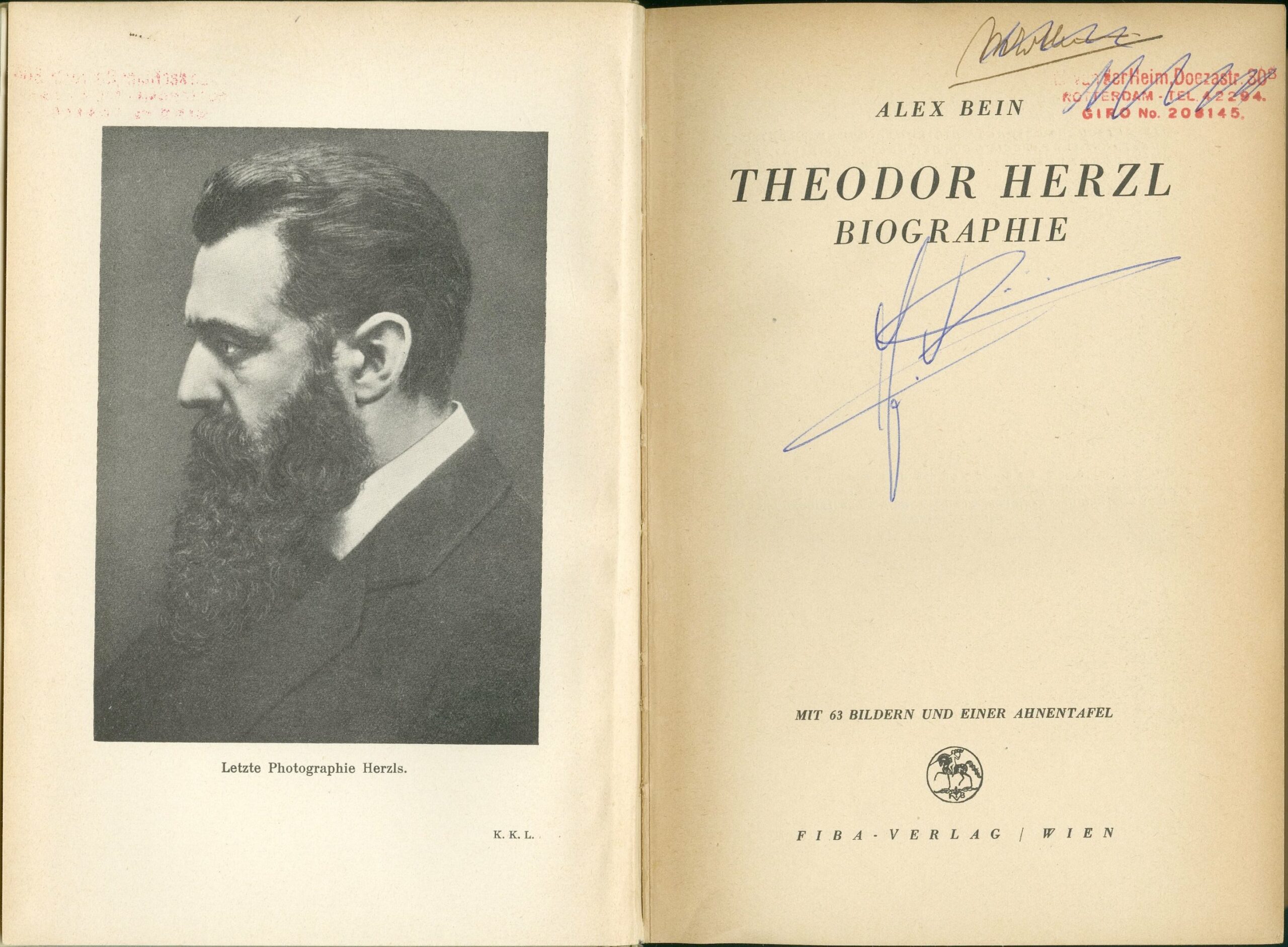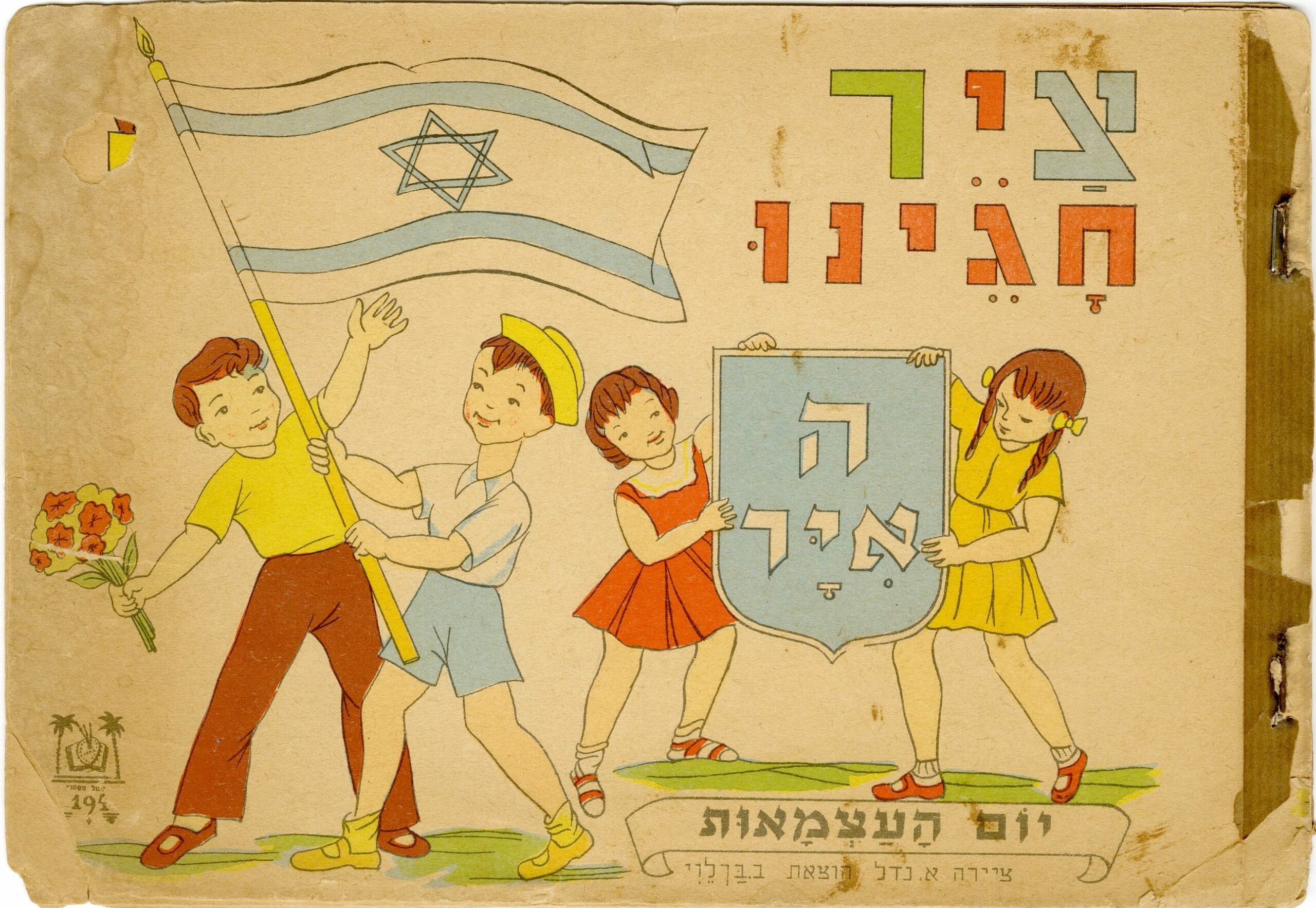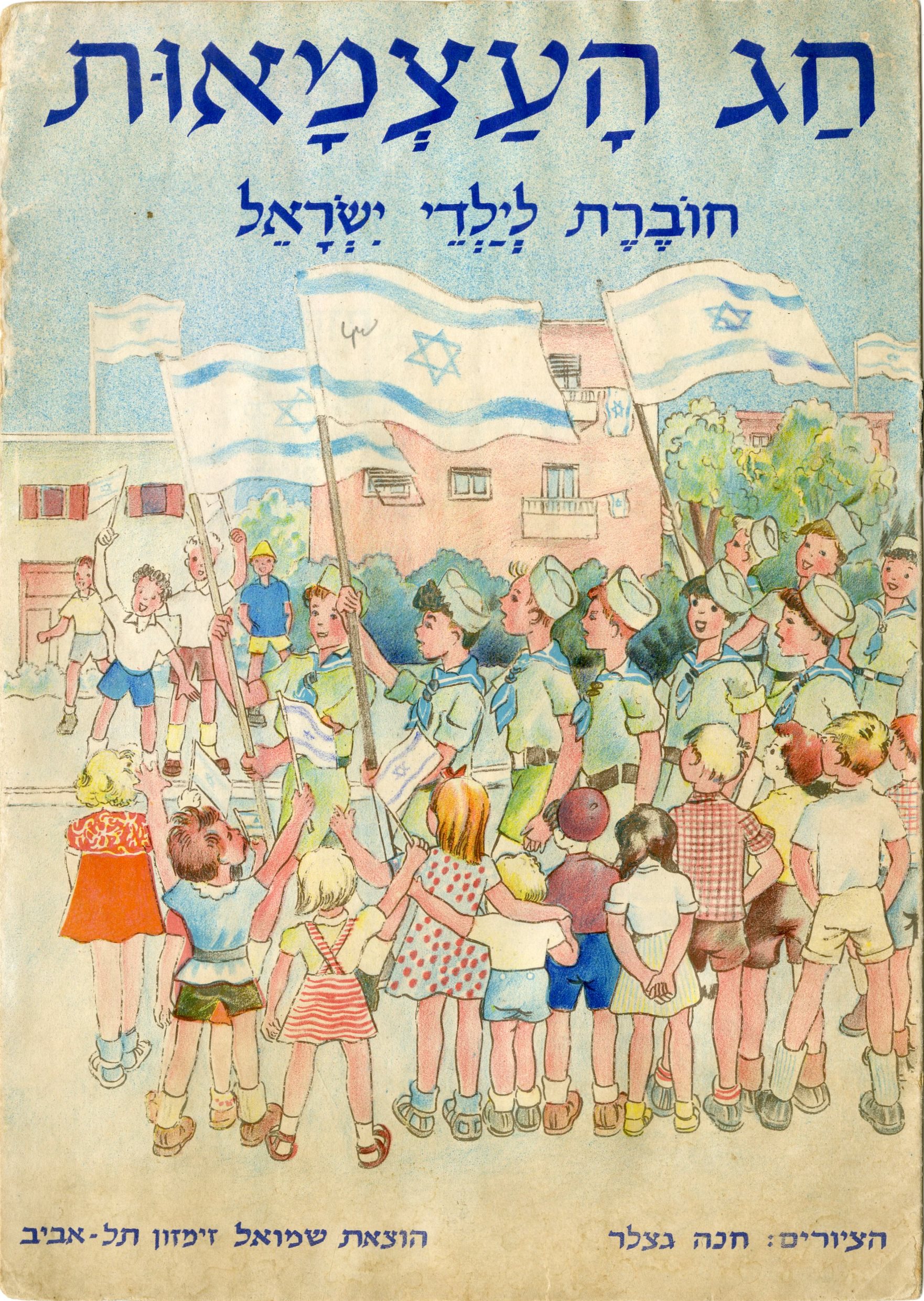A non-traditional Haggadah with illustrations some hand-painted, duplicated in stencil - Moshava Rehovot, "Ḥerut" group, 1936. Alongside spring songs, and excerpts from the traditional Haggadah there are lengthy passages describing the Jewish struggle in building Eretz Israel, with all the Aliyot to Eretz Israel in the modern era detailed in biblical language with a pioneering spirit, from the First Aliyah to the Fifth Aliyah, during which members of the "Ḥerut" group of Ashkenazi descent expanded the Moshava Rehovot during the land decree in the 1930s. Very rare Haggadah.
The Haggadah begins with the bringing of the Omer "We have seen our toil like the toil of ants...", spring songs, Dan Din song, excerpts from the traditional Haggadah - Ma Nishtana, Avadim Hayinu, Betzet Israel MiMitzraim, Vayehi BiShloah Pharao, Ma'ase beRabbi Elazar, Seuda and more.
The interesting part of the Haggadah includes several lengthy original passages describing the rise of Israel in Eretz Israel, starting from the First Babylonian Aliyah at the end of the First Temple period, and continuing with the First Aliyah to Eretz Israel in the late 19th century. The special chapter opens with the title "The Departure from Babylon" featuring a biblical passage describing the first return of the Jewish people to Eretz Israel from Babylon: "Go and lets rebuild the wall of Jerusalem", with an illustration of a sword and tools. Then the opening for the chapter "The Five Aliyot" is an extensive quote from the writings of Rabbi Avraham of Kalish published in 1776, "Moda'a Rabba" about the challenges facing the Jewish immigrants to Eretz Israel: "To all those who ask and seek to dwell with honor in the Holy Land Moda'a Raba... many reversals and transformations will pass over each of those who come to the land before they establish themselves in it. Not a day or two, not a month or a year, but over the course of many years, until the days of absorption have passed and they have become integrated into the life of the land...". This is in fact the opening to "The Five Aliyot" to the Land of Israel. With each chapter appearing under the title "The First Aliyah", "The Second Aliyah", etc., describing the pioneering spirit and the spirit of the immigrants in each of the aliyot. For example, in the First Aliyah chapter appears the sentence: "Go out from the realm of thought and speech into the realm of action, go to the realm of action" expressing the feelings of the first immigrants who rebelled against the Diaspora and decided to take action and immigrate to Eretz Israel to build it. In the chapter "The Second Aliyah", the feelings of those who made Aliyah are described as a "new type among the children of Israel" who called on their brothers to join them in Aliyah and build the land. "The Third Aliyah" describes the initiative of the immigrants to complete the building of the land that their predecessors had begun. "We will make paths, we will carve rocks for the stones! The hammers will echo with our song". In "The Fourth Aliyah" the joy of the Hebrew workers in Eretz Israel and their dedication to building the land is described, and the celebration of their achievements: "A city rejoices in singing choir, the cement sings for us".
The most detailed chapter is "The Fifth Aliyah, " which directly deals with the events of the Haggadah writer. The chapter describes in length the difficult days in Eretz Israel at the beginning of the 1930s - the British restrictions on Jewish immigration to the land, the work stoppage, and on the other hand, the vision of the people of Moshava Rehovot who nevertheless gathered themselves to oppose the decrees and continue building Eretz Israel.
This chapter opens with the words: "Those were desperate days in the country", and describes how "the lack of security in Eretz Israel ceased for the masses of Israel", the gates of the land were closed, immigration to the land stopped, land acquisition stopped because of the British "Land Law": "And a decree came forth from the ruler: "Land will not be given to the group..." and in response arose "a few people among one of the groups in the country from the immigrants of lithuanian exile based in Rehovot" and it is described in detail how they flourished the desert in an area full of sand with the help of a group that came from Hadera: "Come and let us break the yoke of the ruler and hold on to it with our nails... For it is a tradition in the hands of workers in the land. The land of the people shall not be given to them, and they conquered it by virtue of their toil and dedication. And as they said so it was". It describes how they inaugurated the land with a large bonfire they lit on Passover, and how they welcomed the Hachshara group that was on its way to Eretz Israel from "villages of the Goyim in Ashkenaz", who arrived and established the "Ḥerut" group. They were the ones who "came and opened the gates of the Fifth Aliyah with the aliyah of 'Ḥerut", and it has also been made clear to the ruler since then: "Heavy cannons will not remove you from here", and thus the way was paved for the continuation of the Zionist enterprise of building the settlements of the land.
On the last page appears the song "The chain was not broken" around which a large illustration starts with Moses and the Stone Tablets and continues to Jewish immigrants in their traditional attire from different countries alongside pioneers, celebrating with Hora dance the succession of generations of the Jewish people and its vision.
It is not specified on the cover where the haggadah was printed, but according to what is written in the chapter about the Fifth Aliyah: "announcement came to the group, land for the national fund in Rehovot!", and later: "These are the people of Kibbutz "Ḥerut" who felt the first in their flesh and blood the expected fate... And so the first Seder was celebrated here on the land" - the Haggadah was composed by members of the Ḥerut group who flourished the plains of the Moshava Rehovot.
Extremely rare Haggadah. Does not appear in the National Library and is not listed in Steiner's list of kibbutz Haggadot. We have not seen another copy of this Haggadah.
[21] p. 26x21 cm. Soft cover. Stains on title page and the following page. Through the entire pages of the Haggadah, the upper left corner is cut without damage to text and illustrations. Color peels in the purple spine ribbon. Minor tears on the title page restored with paper adhesive on inner side. Overall good condition.

